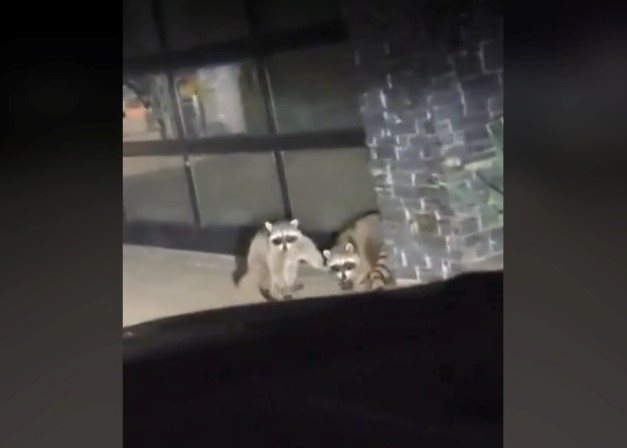Invasive raccoon populations increasing in Kamloops, Okanagan
A Kamloops resident came home to two fuzzy masked strangers in her driveway early one morning last week.
Anju Sandhu and her family have lived on Tranquille along the Thompson River for almost two decades.
“We have seen coyotes, deer, geese and even a bobcat on our property before but never raccoons,” she said.
“They were big and well fed,” she said. “They kept staring at me and making hand motions at each other. I ran for the garage really quickly and shut the door.”
Raccoons are an invasive species in B.C. known to be harmful to the natural ecosystem and create problems in urban and suburban communities.
READ MORE: Destructive, invasive stink bugs prompt provincial pest warning
Pest management specialist with Orkin Canada Matthew Wright confirmed he is seeing more of them in Kamloops and the Okanagan every year.
“We have been seeing them in and around Kelowna for about 15 years,” he said. “They are a bit newer to the Kamloops area and are growing in numbers.”
Wright said the raccoons eat things in our ecosystem like birds and eggs along with cats and other small pets in neighbourhoods.
He said they can get aggressive if cornered.
Residents can deter them from their properties by keeping them clean of attractants.
“Managing garbage and pet food and attractants like compost, gardens and old food can help,” he said.
Sandhu said the raccoons on her property did not get into her garbage but suspects her fruit trees might be attracting them to her yard.
READ MORE: Why more spiders will be crawling into your home this autumn
Raccoons are messy and can spread several different diseases.
They are stocky, grey to reddish-brown, and can weigh between 6 and 22 kilograms, with markings around their eyes and rings around their tails. They have five digits on all four feet and their front paws work like human hands allowing them to get into things.
To contact a reporter for this story, email Shannon Ainslie or call 250-819-6089 or email the editor. You can also submit photos, videos or news tips to the newsroom and be entered to win a monthly prize draw.
We welcome your comments and opinions on our stories but play nice. We won't censor or delete comments unless they contain off-topic statements or links, unnecessary vulgarity, false facts, spam or obviously fake profiles. If you have any concerns about what you see in comments, email the editor in the link above.





